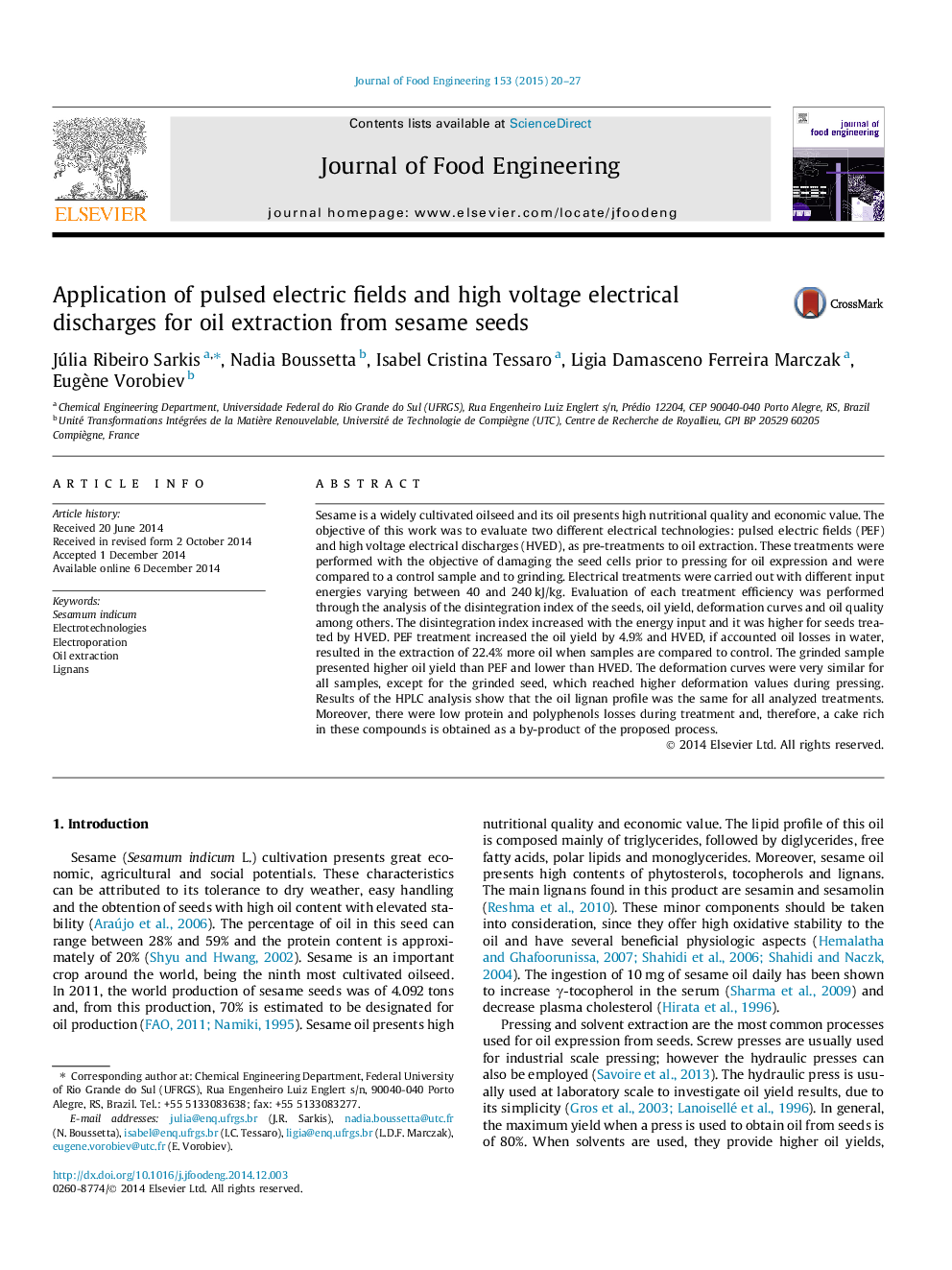| Article ID | Journal | Published Year | Pages | File Type |
|---|---|---|---|---|
| 222880 | Journal of Food Engineering | 2015 | 8 Pages |
•Sesame seed oil extraction was performed after PEF and HVED pre-treatments.•The modifications caused in the seeds by the treatments raised the final oil yield.•Oil analysis from all treatments showed the presence of sesamin and sesamolin.
Sesame is a widely cultivated oilseed and its oil presents high nutritional quality and economic value. The objective of this work was to evaluate two different electrical technologies: pulsed electric fields (PEF) and high voltage electrical discharges (HVED), as pre-treatments to oil extraction. These treatments were performed with the objective of damaging the seed cells prior to pressing for oil expression and were compared to a control sample and to grinding. Electrical treatments were carried out with different input energies varying between 40 and 240 kJ/kg. Evaluation of each treatment efficiency was performed through the analysis of the disintegration index of the seeds, oil yield, deformation curves and oil quality among others. The disintegration index increased with the energy input and it was higher for seeds treated by HVED. PEF treatment increased the oil yield by 4.9% and HVED, if accounted oil losses in water, resulted in the extraction of 22.4% more oil when samples are compared to control. The grinded sample presented higher oil yield than PEF and lower than HVED. The deformation curves were very similar for all samples, except for the grinded seed, which reached higher deformation values during pressing. Results of the HPLC analysis show that the oil lignan profile was the same for all analyzed treatments. Moreover, there were low protein and polyphenols losses during treatment and, therefore, a cake rich in these compounds is obtained as a by-product of the proposed process.
